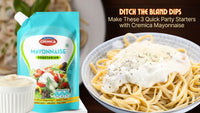When it comes to grilling, achieving the perfect blend of flavors and textures can feel like an art form. Adding barbeque sauce transforms basic grilled food into something sensational, infusing it with depth, sweetness, tanginess, or even a smoky finish. In this blog, we’ll dive into how to select, apply, and even create the perfect barbeque sauce to elevate your next grill session.
Exploring Different Types Of Barbeque Sauce
Barbeque sauce isn’t one-size-fits-all. With regional varieties and unique ingredients, you can find (or create) a sauce to match any grilling style. Here’s a breakdown of popular types:
- Tomato-Based Sauces: Common in the American South, these sauces usually blend tomato paste, vinegar, and sugar. They’re thick, tangy, and perfect for ribs or brisket.
- Vinegar-Based Sauces: Originating in North Carolina, vinegar-based sauces are light and tangy, complementing pork without overwhelming it.
- Mustard-Based Sauces: South Carolina’s mustard-based sauces are ideal for pork and chicken, adding a bit of acidity and a unique tanginess.
- White Sauce: A specialty in Alabama, white barbeque sauce made with mayonnaise, vinegar, and spices gives a creamy, mildly tangy taste and works wonderfully on chicken.
Each type brings out different flavors in grilled meats, allowing you to experiment with what complements your style of grilling best.
Picking The Right Barbeque Sauce For Your Meat
Each type of meat pairs best with certain flavors, and choosing the right sauce can highlight the natural taste of your food:
- For Beef: Rich and smoky tomato-based sauces are great for hearty cuts like brisket or ribs. These sauces add depth and pair well with beef’s natural richness.
- For Pork: Sweet and tangy tomato or mustard-based sauces enhance the flavors in pork, especially for ribs or pulled pork, providing a balance to pork’s slightly sweet taste.
- For Chicken: Chicken is versatile and can handle bold sauces, such as spicy tomato-based sauces, or milder flavors like vinegar or mustard-based sauces.
- For Seafood: Light, slightly acidic vinegar-based or white sauces are ideal, as they won’t overpower delicate fish or shrimp.
Experimenting with pairings can help you unlock new flavors and perfect your grilling.
Saucing Strategies For Optimal Flavor And Texture
Knowing when and how to apply barbeque sauce can make or break a grilling experience. Here are some tips to master saucing:
- When to Apply the Sauce: Barbeque sauces, especially those with sugar, can burn if applied too early. For best results, apply the sauce during the last 10-15 minutes of grilling, allowing it to caramelize without charring.
- Marinating vs. Saucing: Marinating in barbeque sauce before grilling can tenderize meat and impart a mild flavor. However, saucing towards the end helps create that sticky, caramelized layer on the surface, adding more intense flavor.
- Basting Tips: Use a brush or a basting mop to coat meat evenly, creating layers. With each turn of the meat, add another light layer of sauce to intensify the flavor without it becoming too sticky or heavy.
Homemade Barbeque Sauce Recipes To Try
Creating your barbeque sauce adds a personalized touch to your grilling experience. Here’s a simple recipe to start with:
Classic Homemade Barbeque Sauce
-
Ingredients:
-
1 cup ketchup
-
1/4 cup apple cider vinegar
-
1/4 cup brown sugar
-
1 tablespoon Worcestershire sauce
-
1 teaspoon smoked paprika
-
1/2 teaspoon garlic powder
-
1/2 teaspoon onion powder
-
Salt and pepper to taste
-
Instructions: Combine all ingredients in a saucepan and simmer on low heat for 15 minutes, stirring occasionally. Let cool before using.
This basic sauce is easy to customize. Add honey for sweetness, chili powder for spice, or even a splash of bourbon for an extra kick.
Grilling Techniques To Perfect Your BBQ Saucing
Grilling with barbeque sauce is about more than just flavor—it’s about technique. Here are a few pro tips to get the best results:
- Direct vs. Indirect Heat: For thick cuts, use indirect heat to cook the meat slowly, then switch to direct heat for the final few minutes to caramelize the sauce.
- Watch for Flare-Ups: Sugary sauces can drip and cause flare-ups. Keep a close eye, and if flare-ups happen, move the food to a cooler part of the grill to avoid burning.
- Rest Your Meat: Once grilled to perfection, let your meat rest for a few minutes to allow the juices to redistribute. This ensures each bite is flavorful and tender.
Don’t Forget The Sides!
Barbeque sauce isn’t just for meat—it can add depth to sides as well. Try brushing it on vegetables like bell peppers, onions, or zucchini for a smoky-sweet finish, or toss it with grilled corn for a twist on a classic.
Unlock New Flavors with Barbeque Sauce
Barbeque sauce can transform a simple grilling session into a gourmet experience. By choosing the right sauce, applying it at the right time, and experimenting with homemade recipes, you can elevate your grilling game and impress your guests. So fire up the grill, grab your favorite barbeque sauce, and get ready to take your taste buds on an adventure!

 Ketchup
Ketchup
 Mayonnaise
Mayonnaise
 Sandwich Spread
Sandwich Spread
 Salad Dressings
Salad Dressings
 Speciality Sauces
Speciality Sauces
 Desi Chutneys
Desi Chutneys
 Mustard
Mustard
 Jam
Jam
 Syrups
Syrups
 Opera Crisps
Opera Crisps
 Hot Sauces
Hot Sauces






